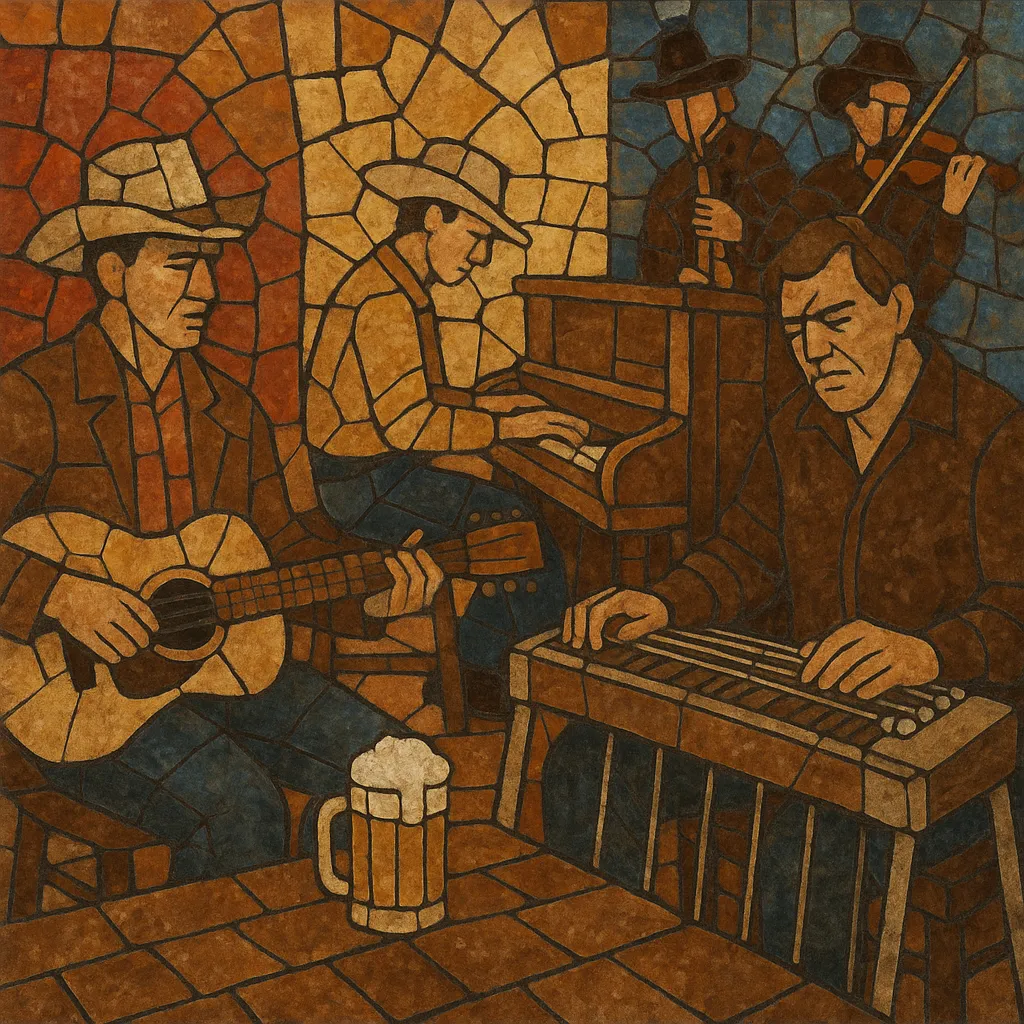
Honky tonk is a hard-edged, barroom strain of country music built for noisy dancehalls and roadside beer joints. It emphasizes a strong backbeat, simple I–IV–V harmony, and vivid storytelling about heartbreak, drinking, cheating, and working-class life.
Sonically, it features twangy electric (often Telecaster) guitar, crying pedal steel or lap steel, fiddle, pounding honky-tonk piano with boogie-woogie figures, upright or electric bass, and a steady shuffle or two-step drum groove. Vocals are direct and emotive, often with a nasal twang and blue-note inflections, designed to cut through a lively room.
Amplification and a danceable feel are central, reflecting its origins in Texas and Oklahoma bars after Prohibition, where musicians needed volume, rhythmic drive, and memorable hooks to reach listeners over clinking glasses and conversation.
Honky tonk coalesced in Texas and Oklahoma beer joints and dancehalls, where working bands needed amplified instruments and a firm beat to engage rowdy crowds. Country ("hillbilly") song forms mixed with blues phrasing, ragtime- and boogie-woogie-influenced piano, and the swing feel of Western swing. Amplified guitars, steel guitar, and drums gradually became standard.
Ernest Tubb helped popularize amplified country and a plainer, conversational vocal style. Hank Williams distilled the honky tonk ethos with tightly crafted songs about love, loss, and vice, becoming the idiom’s defining voice. Artists like Lefty Frizzell, Webb Pierce, Kitty Wells, Hank Thompson, and Ray Price cemented the vocabulary; Price’s signature shuffle beat became a rhythmic blueprint. The sound was lean, direct, and dance-driven.
As Nashville softened arrangements (the "Nashville sound"), Bakersfield and Texas players pushed a tougher, twang-first approach that kept honky tonk’s barroom bite alive and fed into what became outlaw country. George Jones, Merle Haggard, and Buck Owens carried honky tonk songwriting and timbres into broader country and early country-rock contexts.
The Urban Cowboy moment revived dancehall culture, while Dwight Yoakam and neo-traditionalists reasserted classic honky tonk textures in the 1980s and 1990s. Its DNA persists in Texas country, red dirt, truck-driving country, and alt-country, and its rhythmic and guitar-driven attack helped shape rockabilly and early rock and roll.

